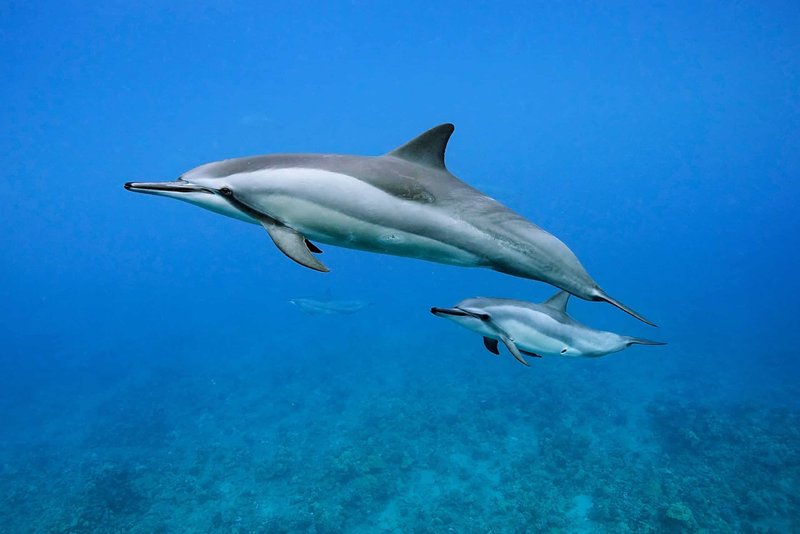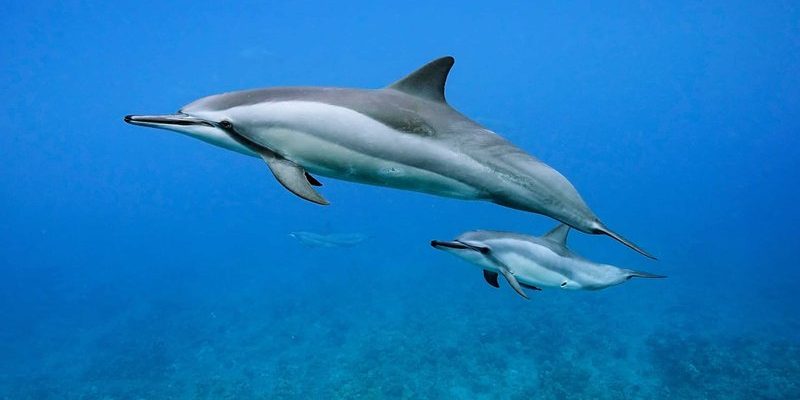
Let’s dive into the world of spinner dolphins, exploring their unique behaviors, habitat, and some surprising facts. If you think of dolphins as the ultimate ocean entertainers, spinner dolphins take that show to a whole new level. So, grab your imaginary snorkel gear, and let’s explore the top ten facts about these remarkable marine mammals!
1. What Makes Spinner Dolphins Unique?
Spinner dolphins, scientifically known as *Stenella longirostris*, stand out among their dolphin relatives for their incredible acrobatic abilities. They are often recognized for their impressive spins—they can leap out of the water and perform multiple rotations before plunging back in. This spiraling motion isn’t just for show; it helps them shake off parasites and communicate with their pod.
These dolphins are also social animals, often found in large groups called pods. A pod can consist of a few dozen to hundreds of dolphins, all swimming and playing together. Imagine a bustling underwater community where everyone knows how to have a good time! Their social structures are complex, with strong bonds formed between individuals. They engage in playful behaviors like surfing the waves and riding boats, which makes them a favorite among marine enthusiasts.
2. Where Do Spinner Dolphins Live?
Spinner dolphins are typically found in warm tropical and subtropical oceans around the world. You might spot them in places like the Hawaiian Islands, the Caribbean, and even parts of the Gulf of Mexico. These areas provide the warm waters and abundant food sources they thrive on.
They prefer shallower waters near coastlines and prefer to rest in the day in deeper waters. This might seem odd, but they come to the surface to catch some rays, socialize, and do those incredible spins in the open ocean when the sun is out. This behavior serves as a clever survival tactic, helping them avoid predators while they rest. It’s like taking a nap in a hidden treehouse while everyone else is out playing.
3. The Amazing Acrobatic Skills
You might be wondering why spinner dolphins are such skilled acrobats. Their slender bodies and powerful tails make them ideal for leaping into the air. It’s almost like they’ve been taking ballet classes in the sea! These spins can reach heights of up to 3 meters (about 10 feet), and they perform these flips not just for fun.
Scientists believe that these acrobatic displays serve several purposes: communication, predator evasion, and social bonding within their pods. Just picture a group of friends engaging in playful games to strengthen their friendships. Honestly, it’s heartwarming to think about their social interactions, which can add a layer of emotional connection to these beautiful creatures.
4. Diet and Hunting Techniques
When it comes to food, spinner dolphins primarily feast on small fish, squid, and crustaceans. They are skilled hunters, often using a strategy called cooperative hunting. This involves working together in groups to herd schools of fish into tight balls, making it easier for everyone to feast.
Interestingly, spinner dolphins have also been observed using different hunting methods based on their environment. For example, in shallower waters, they might work together to trap fish against the shoreline. In deeper waters, they could use a technique called “targeted foraging,” where they dive deep and chase fish individually. It’s like having a varied menu depending on the restaurant you visit, showing their adaptability and intelligence.
5. Communication Patterns
Have you ever wondered how spinner dolphins communicate with each other? They use a complex array of clicks, whistles, and body movements to express themselves. Imagine having a conversation filled with laughter, gestures, and unique sounds that only your friends understand—that’s how these dolphins interact!
These sounds can carry over long distances underwater, allowing them to maintain contact with their pod members. Each dolphin has its own signature whistle, like a personal ringtone. This unique way of communicating helps them stay connected while swimming through vast oceans. So, next time you hear dolphin sounds, think of it as their version of sending a text message!
6. Conservation Status
Despite their charm, spinner dolphins face various threats to their survival. Factors like habitat loss, climate change, pollution, and fishing practices can severely impact their populations. Organizations worldwide are working to protect these incredible creatures and their habitats.
One of the significant conservation challenges is bycatch, where dolphins become accidentally caught in fishing nets. This not only affects their numbers but can also disrupt their social structures. Fortunately, awareness campaigns and marine protected areas are being established to help safeguard their future. It’s a reminder that we all have a role in protecting our oceans and the life within them.
7. Interesting Social Structures
In the dolphin world, social structures are complex and fascinating. Spinner dolphins exhibit a hierarchy within their pods, where relationships and roles can vary widely. These groups often include strong maternal bonds, with mothers raising their calves together.
Calves typically stay with their mothers for several years, learning crucial skills for survival and social interaction. The dynamic within a pod isn’t just about hierarchy; it’s about cooperation and play. You might see younger dolphins mimicking the spins of their elders—a learning method that mirrors how humans learn from one another. It’s all about community, and the dolphin world emphasizes the importance of social connections.
8. Spinner Dolphins and Human Interaction
Human interactions with spinner dolphins can be a double-edged sword. On one hand, they’re a major attraction for tourists, leading to eco-tours and dolphin-watching trips that promote awareness and conservation. On the other hand, these interactions can sometimes be intrusive, affecting the dolphins’ natural behaviors.
It’s essential for tour operators and enthusiasts to approach these incredible creatures responsibly. This means keeping a safe distance, avoiding disruptions, and respecting their space. Not only does this ensure their well-being, but it also allows people to observe their natural behaviors without interference. Just think about how you’d feel if someone interrupted your lunch with a loud party!
9. How Spinner Dolphins Sleep
You might think sleeping dolphins just float around like we do, but spinner dolphins have a unique way of catching some Z’s while staying alert. They can sleep with one hemisphere of their brain at a time—a nifty trick that allows them to maintain some awareness of their surroundings. It’s like multitasking at its best!
When they doze off, they’ll often position themselves in shallow waters, sometimes resting on the surface. This makes it easier to take quick breaks while remaining vigilant. Imagine being able to nap while keeping one eye open for any potential danger—now that’s impressive!
10. Spinner Dolphins in Popular Culture
Finally, spinner dolphins have made quite a splash in popular culture. From movies to documentaries, these charismatic marine mammals have charmed audiences worldwide. Films like *Flipper* have highlighted their playful nature, while various documentaries showcase their incredible behaviors and intelligence.
This presence in pop culture has helped raise awareness about marine conservation and the significance of preserving ocean ecosystems. The more people know about spinner dolphins, the more likely they are to support efforts aimed at protecting them. As they say, knowledge is power—and when it comes to these incredible creatures, the more we understand, the better we can help.
As we wrap up our exploration of spinner dolphins, it’s clear these creatures are more than just ocean performers. They’re complex animals with rich social lives, fascinating behaviors, and a vital role in our marine ecosystems. By learning about them, we take a step toward ensuring their survival for generations to come. So next time you see a dolphin leaping through the waves, remember the incredible life and story behind that joyful spin!

